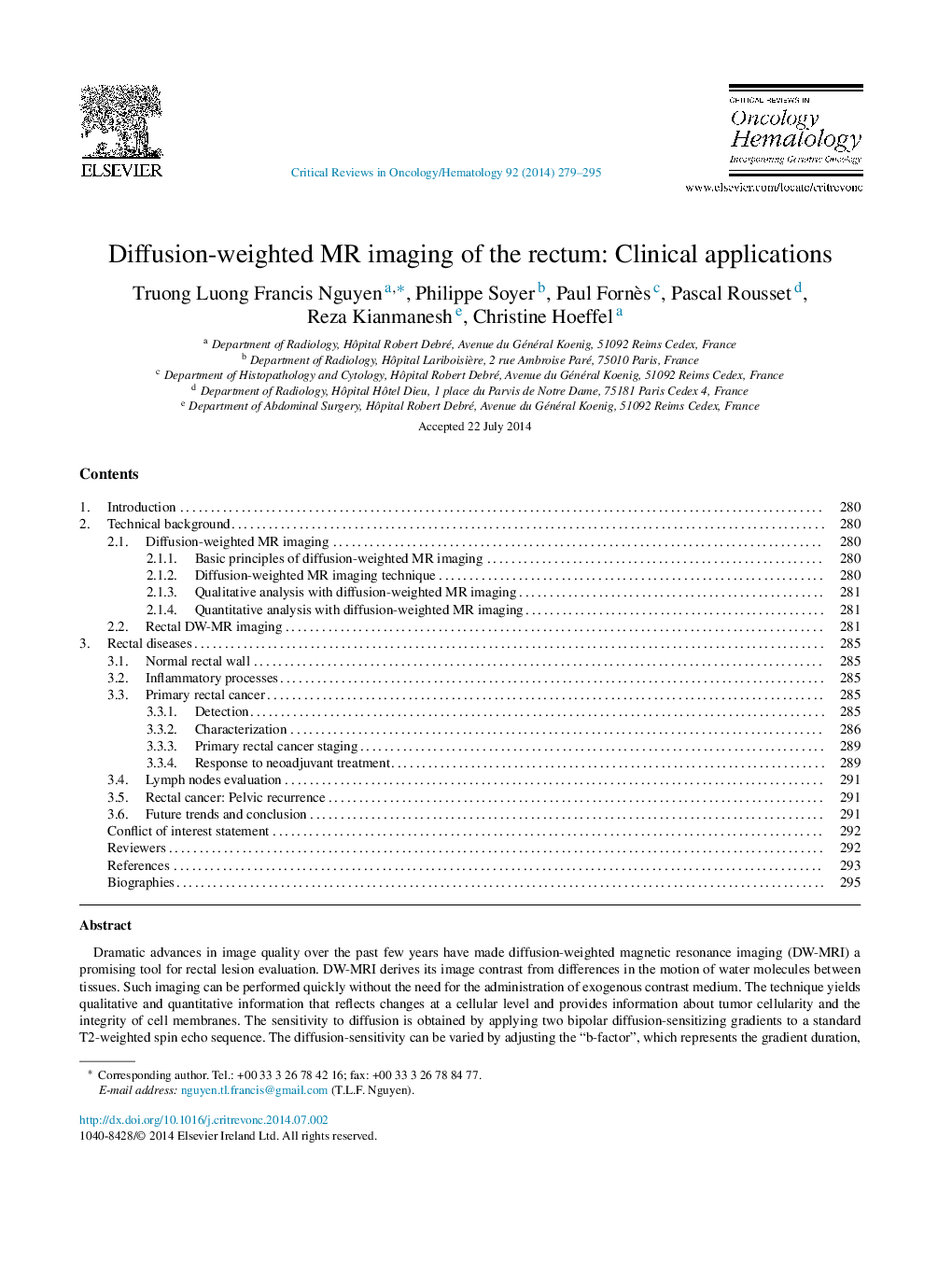| Article ID | Journal | Published Year | Pages | File Type |
|---|---|---|---|---|
| 3328679 | Critical Reviews in Oncology/Hematology | 2014 | 17 Pages |
•DW-MRI allows optimal depiction of inflammatory or infectious rectal and perirectal disease.•DW-MRI is effective in primary or recurrent rectal tumor and nodal detection.•DWI-MRI and ADC measurements are not a valuable adjunct to characterize lymph nodes.•Results of DWI-MRI for predicting rectal tumoral response treatment remain controversial.•DW-MR images increase sensitivity for detection of residual tumor after treatment.
Dramatic advances in image quality over the past few years have made diffusion-weighted magnetic resonance imaging (DW-MRI) a promising tool for rectal lesion evaluation. DW-MRI derives its image contrast from differences in the motion of water molecules between tissues. Such imaging can be performed quickly without the need for the administration of exogenous contrast medium. The technique yields qualitative and quantitative information that reflects changes at a cellular level and provides information about tumor cellularity and the integrity of cell membranes. The sensitivity to diffusion is obtained by applying two bipolar diffusion-sensitizing gradients to a standard T2-weighted spin echo sequence. The diffusion-sensitivity can be varied by adjusting the “b-factor”, which represents the gradient duration, gradient amplitude and the time interval between the two gradients. The higher the b-value, the greater the signal attenuation from moving water protons. In this review, technical considerations relatively to image acquisition and to quantification methods applied to rectal DW-MRI are discussed. The current clinical applications of DW-MRI, either in the field of inflammatory or neoplastic rectal disease are reviewed. Also, limitations, mainly in terms of persistent lack of standardization or evaluation of tumoral response, and future directions of rectal DW-MRI are discussed. The potential utility of DW-MRI for the evaluation of rectal tumor response is on its way to being admitted but future well-designed and multicenter studies, as well as standardization of DW-MRI, are still required before a consensus can be reached upon how and when to use DW-MRI.
